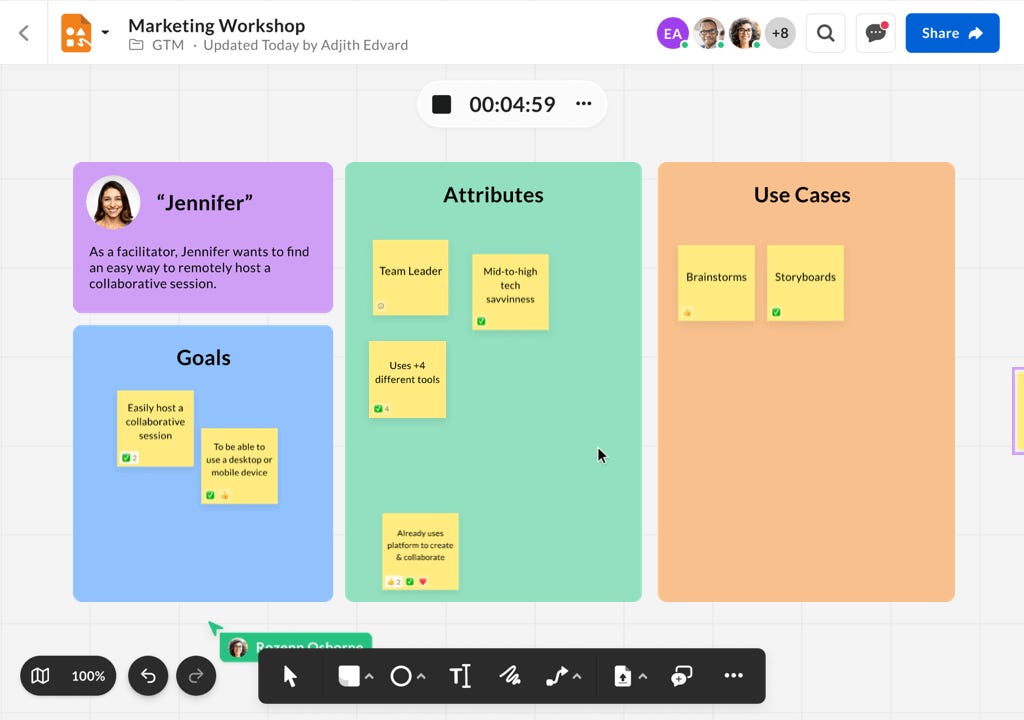
As more companies embrace hybrid work on a permanent basis, more collaboration is naturally happening digitally — that, however, can lead to content sprawl. The cloud content company Box is aiming to solve that with a new virtual whiteboarding tool called Box Canvas. The new tool lets users visually collaborate in real-time or asynchronously while keeping their work on the Box platform.
Box Canvas fits in with Box’s broader plan to provide a platform that “powers the full life cycle of an enterprise’s most important content,” as CEO Aaron Levie put it last month during Box’s earnings conference call. Besides content creation and collaboration, that includes tools for e-signatures, publishing, analytics and more.
“Most enterprises are dealing with fragmented, unsecured, complex and overly costly systems to manage” content,” Levied said. “And these systems are only growing over time as new use cases emerge.”
The new tool is designed to span a range of use cases. Product teams, for instance, could use visual elements like shapes and connectors to create diagrams and process flows for new products. Marketing teams could collaborate on new campaigns, using interactive features like sticky notes and comments. Sales teams can deliver interactive presentations and engage with outside partners and customers, with features like timer tools and the ability to create presentation slides.
Hybrid work “requires tools that extend beyond static document types and traditional communication styles to be more dynamic and fluid,” Box Chief Product Officer Diego Dugatkin said in a statement.
Box’s competitors are similarly rolling out tools that cater to hybrid workers who want to keep their work in one space. Google, for instance, has been adding more robust features to its collaboration tool Spaces, which is part of its Workspace platform.
Box Canvas is expected to be generally available in the fall of this year and will be included in all Box plans. Around two-thirds of the Fortune 500 already uses the Box Content Cloud to manage, secure and share content, both internally and with external partners. The company has about 100,000 customers.




















